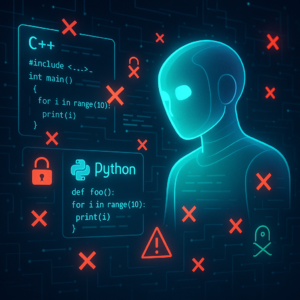
Mastering AI-Content: The Future of Detecting Machine-Generated Text
In today’s digitally charged world where the buzzword “AI” is not just a myth but a reality transforming our screens, it’s become a pretty big deal to know whether the words you read are from a human brain or a savvy algorithm. With large language models (LLMs) like ChatGPT becoming household names, they’re turning social media into a hotspot for AI-generated chatter. And while AI’s linguistic prowess is impressive, it raises some eyebrows about misinformation, bias, and privacy slip-ups. So, how can we tell whether it’s a human or a bot speaking?
Welcome to the quest for smarter AI content detection, where the challenge isn’t simply about figuring out if something is machine-made (because guess what, that’s old news!). The real trick is understanding the roles AI plays in content creation and just how deeply involved it was. This blog post dives into exciting research that pioneers a fresh detection approach with the potential to transform our understanding of AI-generated text.
The Growing Need for Smarter AI-Content Detection
With language models like GPT-4 and LLaMA strutting their stuff across the web, they bring both incredible creativity and, let’s face it, some chaos. These intelligent algorithms can create content that’s as fluent as your favorite blogger, but their knack for “hallucinations”—those pesky mistakes that look convincing but aren’t factually correct—can lead to misinformation galore.
Current detection methods are pretty binary—they’ll tell you if something’s human or machine-generated. But the line between AI and human collaboration is getting fuzzier. Between drafting posts and tightening up your grammar, AI plays many roles, making it harder to say, “That’s AI!” with any real certainty. That’s where this innovative research seeks to make a difference.
Beyond Binary: Detecting AI’s Role in Content
Meet LLMDetect: a groundbreaking benchmark that aims to move beyond black-or-white detection. The researchers have introduced two fascinating tasks:
-
LLM Role Recognition (LLM-RR): Think of it as theatre roles for language models. This task aims to identify what part AI played in content creation—was it the main act or just a supportive role?
-
LLM Influence Measurement (LLM-IM): Here, the researchers attempt to measure how much of the text is actually AI’s handiwork. If 0 means no AI involvement and 1 means total AI control, where does the piece land?
These tasks provide a more nuanced way of looking at content, acknowledging the layered realities of AI-assisted content.
Let’s Talk Methods: Diving into the Detection Process
1. Advanced Frameworks and Their Components
LLMDetect employs the Hybrid News Detection Corpus (HNDC) and the DetectEval suite to put AI detection to the test. This blend not only covers diverse contexts but also challenges the AI with varying degrees of involvement, paving the way for robust evaluations.
2. From Training to Execution
From zero-shot learning to fine-tuned methods, the study tested ten different detection models. While off-the-shelf advanced LLMs stumbled over their own creations, fine-tuned models like DeBERTa and Longformer took the spotlight by outperforming others in both detecting and measuring AI influence.
3. Variations and Challenges
To ensure the detectors could generalize, they were put through cross-context and multi-intensity challenges. Whether it was content from different cultures, domains, or levels of AI involvement, this research was all about proving that effective detection isn’t just a one-trick pony.
The Real-World Implications
Okay, so why should you care? For starters, smarter detection tools mean stronger defenses against misinformation. Whether you’re flitting through Twitter or diving into a scholarly article, knowing who (or what) wrote that content helps us maintain trust and integrity online.
These tools could be game-changers for journalists, educators, and anyone invested in safeguarding quality content. Not only does this research empower users to better discern content sources, but it also sets the stage for AI systems that self-monitor and improve over time.
Key Takeaways
- Binary Begone: The next wave of AI detection recognizes roles, not just existence. This approach adds depth to our understanding of AI involvement.
- LLMDetect Rocks: With its dual tasks and robust frameworks, LLMDetect leads the charge in establishing benchmarks for nuanced detection.
- Real Impact: The shift towards smarter detection paves the way for maintaining digital trust and fighting misinformation on a larger scale.
- Tools for Everyone: Whether for journalists, researchers, or everyday consumers, these developments promise more transparency and integrity in digital content.
In a world continually shaped by technology, it’s vital we stride forward with tools that uphold trust and accountability—a mission this research admirably champions.
So next time you read something online, the words might tell you a story, but soon enough, the context will add the transparency needed to truly understand the narrative behind them. Here’s to smarter, more insightful digital experiences!
If you are looking to improve your prompting skills and haven’t already, check out our free Advanced Prompt Engineering course.
This blog post is based on the research article “Beyond Binary: Towards Fine-Grained LLM-Generated Text Detection via Role Recognition and Involvement Measurement” by Authors: Zihao Cheng, Li Zhou, Feng Jiang, Benyou Wang, Haizhou Li. You can find the original article here.




